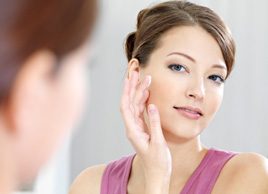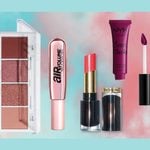Do you need a BB cream?
Curious about this new beauty product? BB creams have been appearing on drugstore and department store shelves everywhere. Find out what this beauty balm could do for your skin

Source: Best Health Magazine, March/April 2012
Q: I’ve been seeing something new at the cosmetic counters lately called BB creams. What are they?
BB stands for beauty balm. These creams are like tinted moisturizers or light-coverage foundations’but not quite the same thing. If you believe the skincare companies, they’re the ultimate multi-tasker. They address skin’s health with antioxidants (such as vitamin C), but each brand is a bit different. Some are a little pearlescent; some have anti-aging collagen-boosting ingredients; some have UV protection.
And suddenly, they’ve been appearing on drugstore and department store cosmetic and skincare product shelves, with brands such as Garnier, Clinique, Vichy, Marcelle and others jumping on the BB bandwagon.
It’s no coincidence that I first heard about BB creams long before they hit North America: Stephanie Han, our art director, who is of Korean heritage, told me about them. According to the beauty brands, Korea is credited with starting the trend, which then spread throughout Japan, China and Southeast Asia. Korean actresses, known for their porcelain complexions, were early adapters, says Jean-Daniel Labbé, Montreal-based marketing manager for Garnier. In Asia (where BB stands for blemish balm), ‘BB creams have a huge following,’ says Sarah Haynes Heath, a spokesperson for Boscia, a brand that originated in Japan and whose BB cream will be available at Sephora in May.
In Asia, where there are many brands to choose from, BB creams often aim to reduce acne and lighten skin tone, which drives a big part of the skincare industry in Asia. Says Labbé: ‘Asian culture promotes the whitest skin possible via use of acid peels, no sun exposure, etc.’
‘I buy mine in the beauty aisles of the Asian grocery stores,’ Stephanie tells me. ‘I use Missha, and Dr. Jart+, which is oil-free and has a high SPF.’ Her observation is that these have a grey undertone and provide heavier coverage than the newer North American versions. Labbé says Garnier’s BB cream (introduced last year in Europe, and which he says is ‘oriented to hydration, skin tone evening and skin brightening’) focuses ‘less on the grey undertones that offset yellowish tones that Asians might experience, and more on the beige undertones to correct redness and dullness in Caucasian skin.’
To me, these new products at first look and feel like tinted moisturizers, but Labbé is adamant that they’re different. ‘Tinted moisturizer has a heavier appearance. BBs have a quick-breaking texture and glide on easily.’
Typically, they don’t come in a wide range of shades. For example, Garnier has Light/Medium and Medium/Dark. Garnier says another BB cream for oily skin is in the works, and a shade for darker skin may be launched in future. Smashbox’s Camera-Ready 5-in-1 Beauty Balm, with SPF 35, comes in Fair, Medium and Dark.
There’s an odd blip to the BB cream back story. Their invention is repeatedly credited by the beauty industry to a German dermatologist, Dr. Christine Schrammek-Druiso, who developed a blemish balm product in the 1960s to soothe and cover skin redness after treatments such as facial peels. The more-than-40-year gap, from Germany to a global phenomenon, puzzled me, so I contacted Schrammek-Druiso’s clinic in Essen, Germany, where marketing manager Claudia Dellenbush said the doctor had invented it in 1967, but export to Korea started later.
Well, does it really matter how or when BB creams leapt across the continents? They’re here, and you can expect to see more companies putting their spin on them. And if they live up to their multi-tasking promise of treating and moisturizing your skin, and perfecting its appearance, they might even save you time and money.
What are you curious about? Send me your beauty questions at besthealthmag.ca/askRhonda or @RhondaRovan on Twitter.




